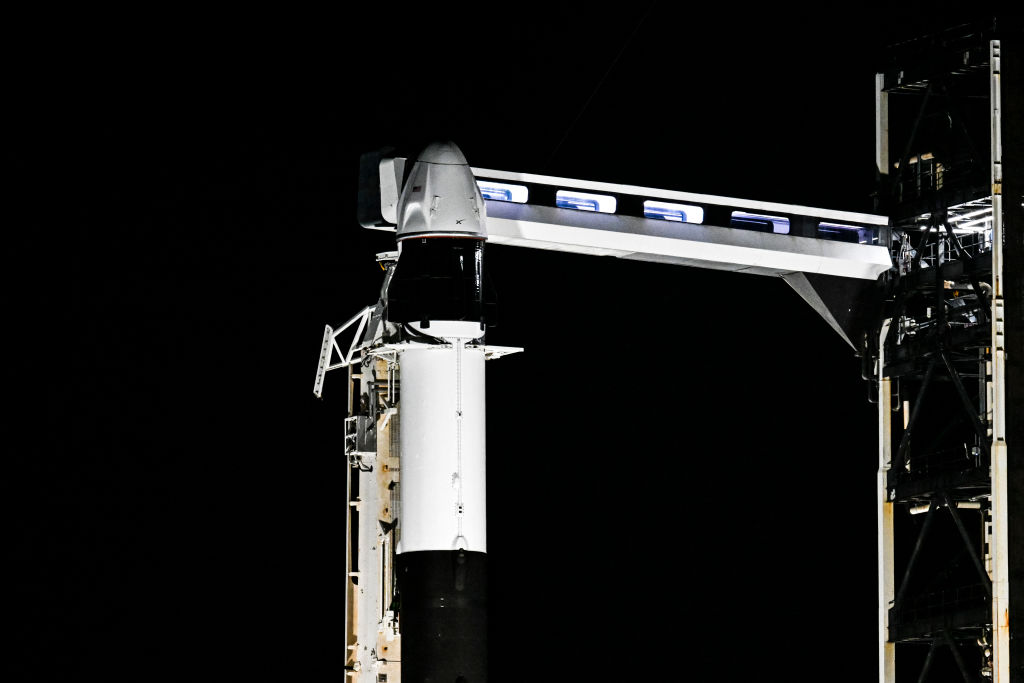SpaceX finished August with a record number of Falcon 9 missions, and the Elon Musk-led space company isn’t slowing down. A highly anticipated mission in September will be the Polaris Dawn private crewed mission, which was just postponed from this week due to unfavorable weather conditions. If it does commence eventually, the mission will fly four crew members, commanded by the billionaire Jared Isaacman, further into space than humans have traveled in more than 50 years. In addition, SpaceX has a satellite mission and a routine crewed mission to the International Space Station (ISS) scheduled for September.
On Aug. 29, Jeff Bezos’ Blue Origin launched a New Shepard rocket from its West Texas spaceport, sending six people to suborbital space. It was Blue Origin’s eighth crewed flight with the New Shepard rocket, designed to fly the company’s suborbital space tourism program. The crew included entrepreneur Nicolina Elrick, university professor Rob Ferl, businessman Eugene Grin, cardiologist Eiman Jahangir, entrepreneur Ephraim Rabin and 21-year-old college student Karsen Kitchen, who made history as the youngest woman in space.
Here are five space missions to watch in September 2024:
- Sept. 2: SpaceX launches a group of satellites for Northrop Grumman. September kicks off with a SpaceX mission called NROL-113, deploying a group of satellites assembled in collaboration with Northrop Grumman. SpaceX and Northrop Grumman have teamed up to build a reconnaissance satellite constellation for the National Reconnaissance Office. A reconnaissance satellite orbits Earth and is typically deployed for military or intelligence-gathering purposes. The satellites will launch atop a SpaceX Falcon 9 rocket on the morning of Sept. 2 from a launch pad in Vanderberg, Calif.
- Sept. 11: Russia sends three cosmonauts to the ISS. Russia’s national space agency, Roscosmos, will launch a Soyuz 2.1a rocket carrying a three-person crew to the ISS. The crew is comprised of commander Alexey Ovchinin, cosmonaut Ivan Vagner and NASA astronaut Don Pettit.
- Sept. 11: Japan launches a reconnaissance satellite. Also on Sept. 11, Japan’s Aerospace Exploration Agency (JAXA) is scheduled to launch a H-IIA rocket operated by Mitsubishi Heavy Industries. The rocket will carry a reconnaissance satellite called IGS Radar 8 and blast off from the Tanegashima Space Center in the south of Japan’s Kagoshima Prefecture.
- Sept. 16: ULA test launches the Vulcan rocket. The United Launch Alliance (ULA), a joint venture between Lockheed Martin and Boeing, is preparing for its next Vulcan rocket test flight. Designed to replace two previous rockets, the Vulcan will be primarily used for defense purposes, such as deploying intelligence satellites. The upcoming test mission will blast off from the Kennedy Space Center in Cape Canaveral, Fla.
- Sept. 24: SpaceX sends four astronauts to the ISS. Regardless of the final launch date of the Polaris Dawn mission, SpaceX’s Falcon 9 is scheduled to fly on Sept. 24, sending a Dragon spacecraft carrying four astronauts to the ISS as part of the NASA Commercial Crew Program. The mission was pushed back from Aug. 18 and will also launch from the Kennedy Space Center in Cape Canaveral, Fla. Crew members include Commander Zena Cardman, Pilot Nick Hague, Mission Specialist Stephanie Wilson and Roscosmos cosmonaut Aleksandr Gorbunov.

